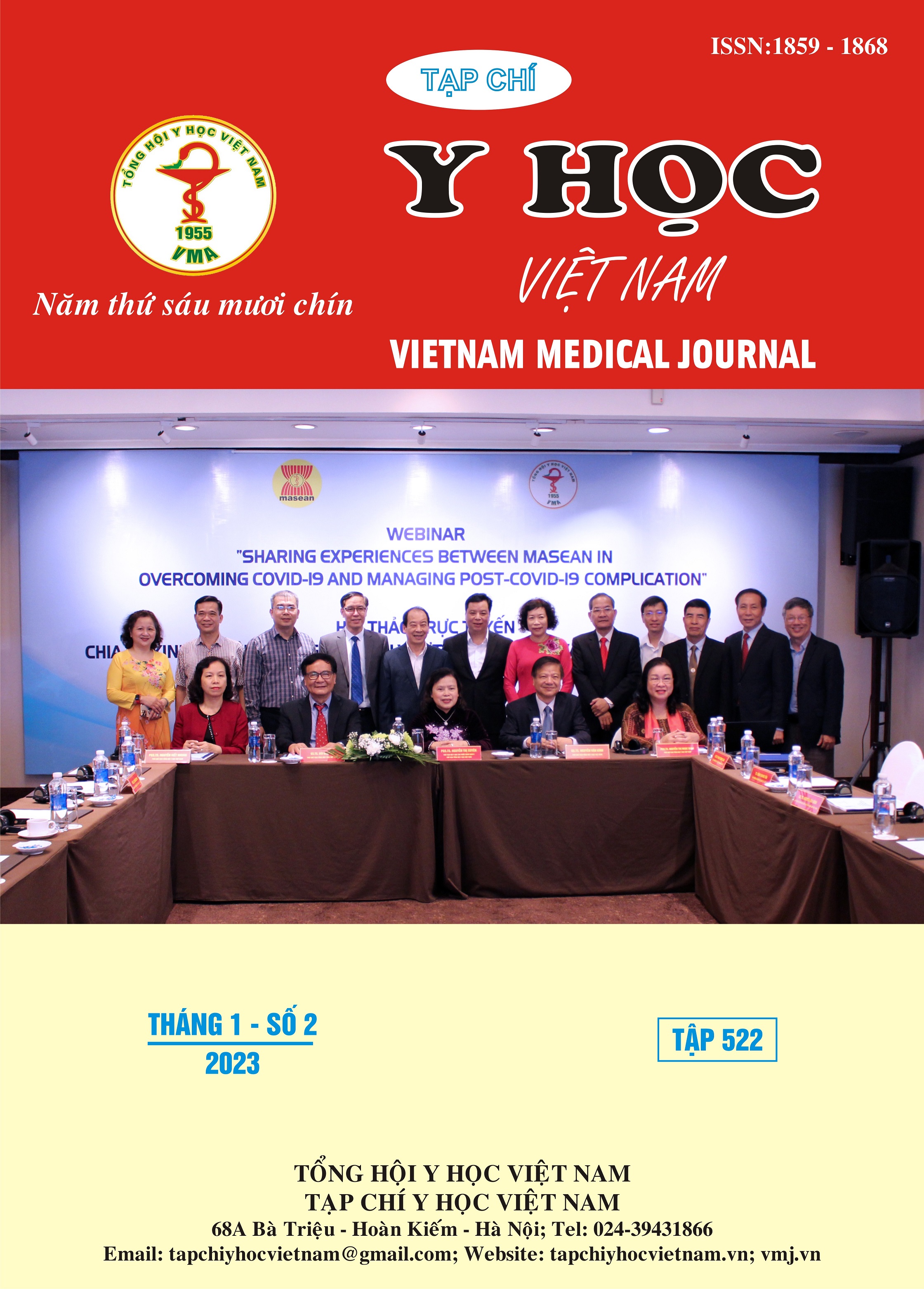DEFINITION OF BACTERIALOGICAL ETIOLOGY BY CULTURE AND REAL-TIME PCR IN PATIENTS WITH EXACERBATIONS OF BRONCHIECTASIS TREATED AT THAI NGUYEN CENTRAL HOSPITAL
Main Article Content
Abstract
Objective: To define bacterialogycal etiology by culture and real-time PCR in patients with exacerbations of bronchiectasis describe treated at Thai Nguyen central hospital. Subjects and methods: Prospective, cross-sectional study on 36 patients with exacerbations of bronchiectasis, treated from November 2021 to July 2022. Results: Mean age of patients was 64.17 ± 16.39 years old, with the group > 60 years old accounting for 69.4%. The male/female ratio was 1.7/1. Mean of BMI was 18.47 ± 2.59 kg/m2. 50% of patients had a history of non-tuberculous lower respiratory tract infection, while the patients with a history of tuberculosis occupied 30.6%. The positive rate of culture was 33.3%, and real-time multi-agent PCR gave a positive result in 25%, of which Streptococcus pneumoniae being 11.1%, Hemophilus influenzae 13.8%. Bacteriological results (culture + PCR) were positive 41.7%, in which the poroportions of single agent and multi-agent followed by 25 and 16.7%, and co-infection of S. pneumoniae and H. influenzae accounted for a high rate. Conclusions: Conventional culture had a low positive rate, PCR detected up to 25% of cases not detected by conventional culture methods, and co-infection of S. pneumoniae and H. influenzae accounted for a high rate. Combining culture with real-time PCR increased the rate of detected bacterialogycal etiology.
Article Details
Keywords
Bronchiectasis, bacteria, real-time PCR.
References
2. Hill A. T., Sullivan A. L., Chalmers J. D., et al. (2018). British Thoracic Society guideline for bronchiectasis in adults. BMJ open respiratory research, 5(1), e000348.
3. Hill A. T., Haworth C. S., Aliberti S., et al. (2017). Pulmonary exacerbation in adults with bronchiectasis: a consensus definition for clinical research. The European respiratory journal, 49(6), 1700051.
4. Chu Thị Thu Lan (2016). Đặc điểm lâm sàng, hình ảnh chụp cắt lớp vi tính độ phân giải cao và vi khuẩn học qua dịch rửa phế quản của bệnh nhân giãn phế quản tại Bệnh viện Trung ương Thái Nguyên. Luận văn thạc sĩ y học. Đại học Y- Dược Thái Nguyên.
5. Rosales-Mayor E., Polverino E., Raguer L., et al. (2017). Comparison of two prognostic scores (BSI and FACED) in a Spanish cohort of adult patients with bronchiectasis and improvement of the FACED predictive capacity for exacerbations. PloS one, 12(4), e0175171.
6. Bùi Thị Thanh Bình (2020). “Nghiên cứu đặc điểm kiểu hình, vi khuẩn học đờm và kết quả điều trị bệnh nhân giãn phế quản nhập viện tại Trung tâm Hô hấp Bệnh viện Bạch Mai”- Luận văn thạc sỹ y học - Đại học y Hà Nội.
7. Chu Khánh Hòa (2015). “Đặc điểm lâm sàng, cận lâm sàng và vi khuẩn học của bệnh nhân giãn phế quản tại Trung tâm Hô hấp Bệnh viện Bạch Mai”, Khóa luận tốt nghiệp bác sỹ đa khoa, Trường Đại học Y Hà Nội.
8. Dimakou K., Triantafillidou C., Toumbis M., et al. (2016). Non CF-bronchiectasis: Aetiologic approach, clinical, radiological, microbiological and functional profile in 277 patients. Respiratory medicine, 116, 1–7.
9. Lê Hoàn và Cs (2021). Xác định căn nguyên nhiễm trung đường hô hấp dưới cộng đồng bằng kỹ thuật chuỗi phản ứng Polymerase đa mồi tại bệnh viện đại học y Hà Nội, Tạp chí nghiên cứu y học, tr 131-134.
10. Aydemir O., Aydemir Y., & Ozdemir, M. (2014). The role of multiplex PCR test in identification of bacterial pathogens in lower respiratory tract infections. Pakistan journal of medical sciences, 30(5), 1011–1016.


